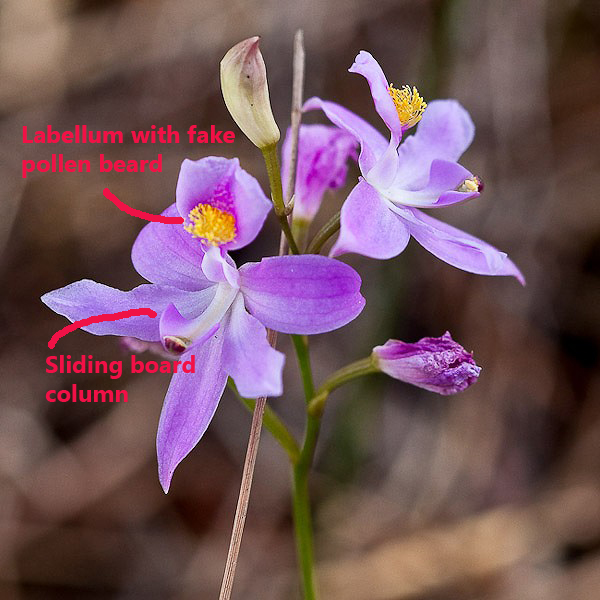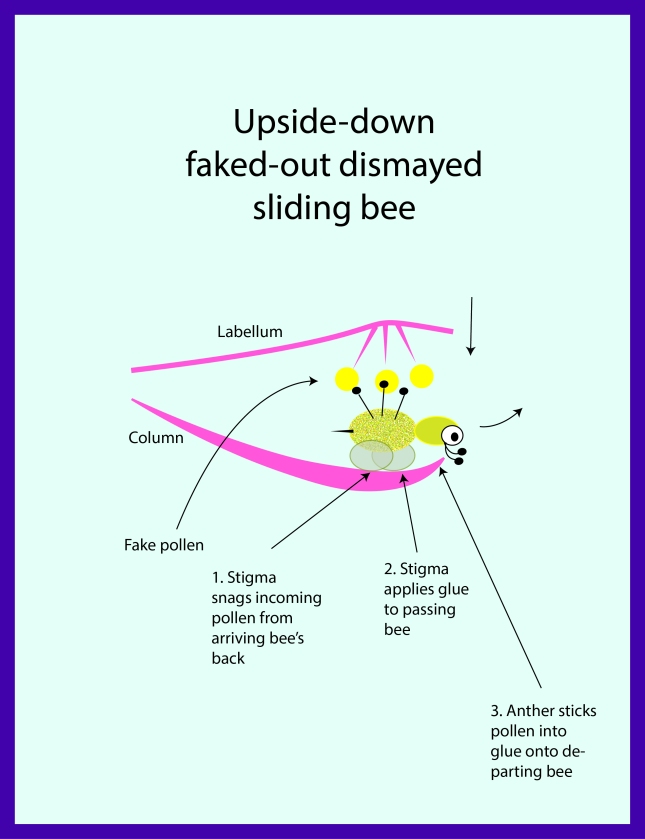Calopogon pallidus and additional species
Orchidaceae
John and George checked out today the first day of the new Jonathan Dickinson State Park food truck and alfresco dining facility overlooking the river. Four thumbs up on the chef. Then full of hot dogs and Cheetos we wandered into a wet pine savanna for a better look at the zigzag bladderworts featured in last week’s blog for having odd nutritional practices. So here’s the thing: other plants in the Bladderwort Meadow eat funny too. Plentiful also was sundew (Drosera) with its red bug-catching tentacled leaves.
Mixed in with the flesh-eaters were pretty Grass Pink Orchids, which have their own nutritional assistance…symbiotic (mycorrhizal) fungi with one end of the fungal filaments living internally in the orchid root cells, and the other end out in the mud securing sustenance, presumably mostly phosphorus and likely nitrogen. Mycorrhizae are far from rare; it just seems likely a little help from its fungal friends goes a long way in this case.
Calopogon has a curious pollination mechanism entomologist Charles Robinson described in rich detail right here in (Orlando) Florida in the Botanical Gazette of 1887. In Calopogon the fancy third petal, the labellum, rises vertically. The organ containing the pollen-receptive stigma and pollen-producing anthers, the column, juts out horizontally below the labellum, with the stigma and anthers facing upward.

That vertical labellum has a tuft of yellow hairs giving the genus its name (Calo-pogon = beautiful beard). Bees go for yellow, the color of pollen, and you could interpret the yellow beard as false anthers offering bogus pollen. A visiting bee grabs the beard seeking pollen, and surprise! The labellum is hinged and folds downward plopping the bee’s fuzzy back onto the stigma and real anthers with real pollen.
The column has raised sides like a playground sliding board. The bee on its back slides down the board, first delivering any pollen from its back to the stigma, then the stigma applies glue to the bee’s back, and finally the sticky-backed bee brushes over the anthers where outbound pollen sticks to the glue. Of it buzzes to flop and slide again in a different flower. A three-stop assembly line.

Orchids usually package the pollen into hard masses called pollinia, but in Calopogon the masses are soft, the grains loosely connected by threads, interpreted by other botanists as an adaptation for snagging to the bee’s fuzzy flipside. The pollen winds up positioned where the bee can’t remove it. The bee’s stuck with it until its next slip and fall.